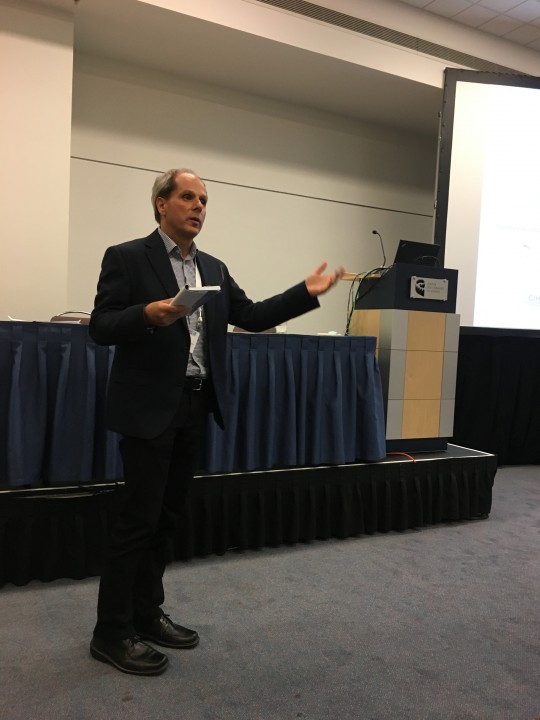Last October 3-7, 2018, Brainlab team members Natàlia Gorina-Careta, Fran López-Caballero and Carles Escera traveled to Quebec City (Canada), to participate in the 58th Annual Meeting of the Society for Psychophysiological Research (SPR). During the course of almost one week, several symposiums and plenary talks were organized, aiming at the presentation and discussion of original theory and research, instrumentation and methodology, and new directions and standards covering all areas of psychophysiological research.
There, the head of Brainlab Prof. Carles Escera, together with Dr. Emily B.J. Coffey, from the Eberhard Karls Universität Tübingen (Germany) chaired the symposium entitled “Is the Frequency-Following Response (FFR) an index of subcortical auditory cognition?”, which included talks by some of the most relevant researchers in the field. The overall aim was to discussing from different perspectives about current knowledge on the FFR and its neural origins, and how animal research can contribute to the research in humans.
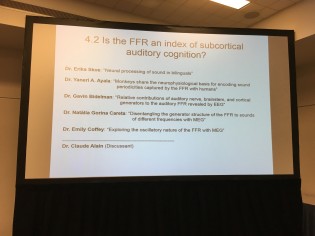
The symposium was opened with welcome words by Carles Escera, who quickly gave the word to Dr. Erika Skoe, from the University of Connecticut (CT, USA). In her talk entitled “Frequency-Following Responses: Insights from large stimulus sets and bilinguals”, Dr. Skoe gave an overview on the FFR, followed by a review of the existing literature about its online and contextual modulations.
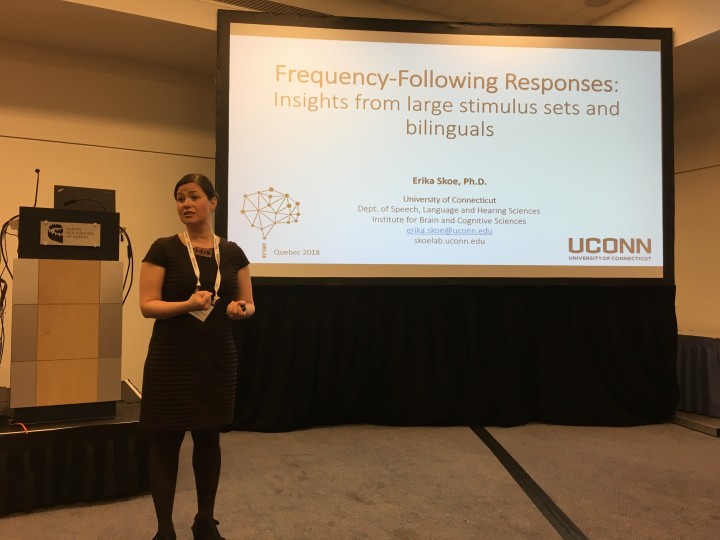
This set the ground for Dr. Yaneri A. Ayala, from the Universidad Nacional Autónoma de México, which addressed the FFR in animal studies in her talk entitled “Monkeys share the neurophysiological basis for encoding sound periodicities captured by the FFR with humans”.
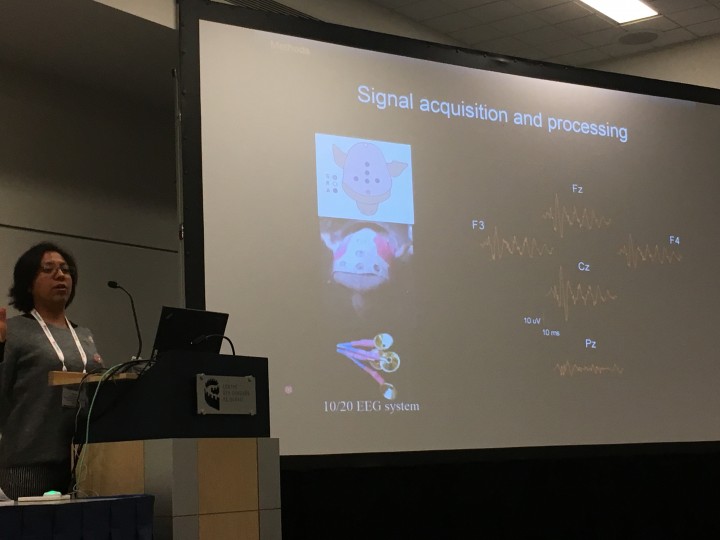
Then we immersed into the neuroanatomical origins of the FFR in humans with two subsequent talks, one by Dr. Gavin M. Bidelman, from the University of Memphis (TN, USA), and Natàlia Gorina-Careta, from our Brainlab. Dr. Bidelman approached the FFR neural sources from an EEG perspective, and discussed the recent findings of his group in a talk entitled “Contributions of auditory nerve, brainstem, and cortical generators to the auditory Frequency-Following Response revealed by EEG”.
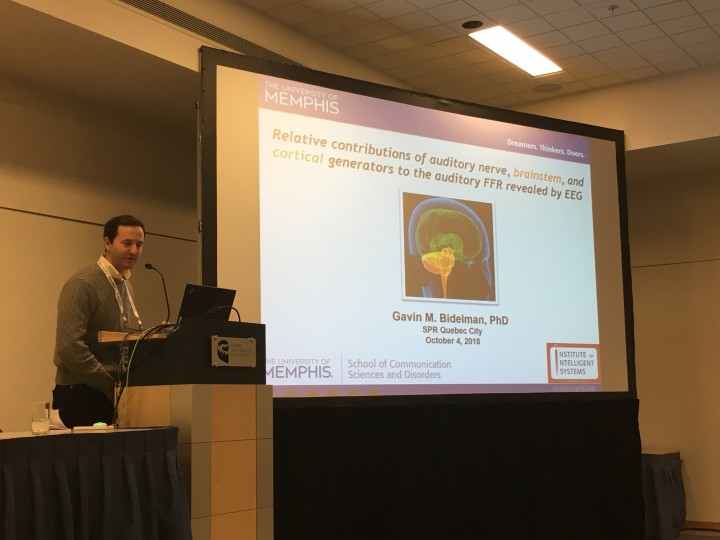
His insight into the neural origins of the FFR was followed by the talk entitled “Disentangling the generator structure of the FFR to sounds of different frequencies with MEG”, in which Natàlia Gorina-Careta illustrated how the use of MEG can complement and extend the previous findings about the neural origins of the FFR.
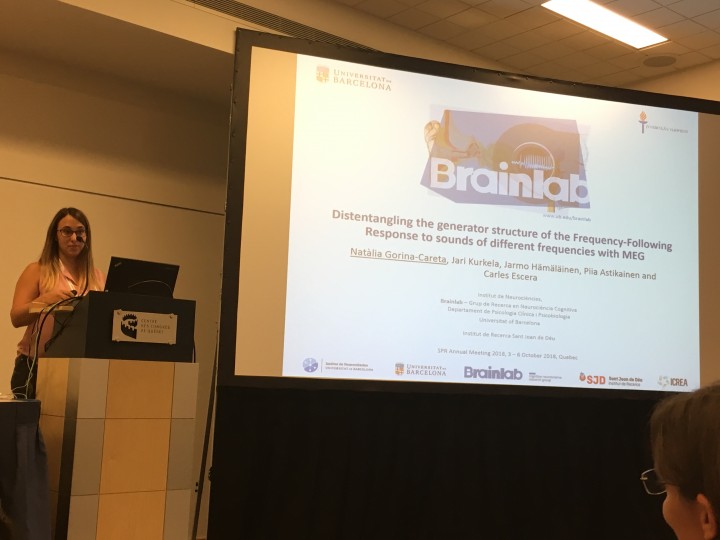
The final talk of the symposium, entitled “Exploring the oscillatory nature of the Frequency-Following Response (FFR) with MEG” was given by Dr. Emily B.J. Coffey, in which she went a step further and considered how the oscillatory nature of the FFR is modulated depending on the eliciting stimulus.
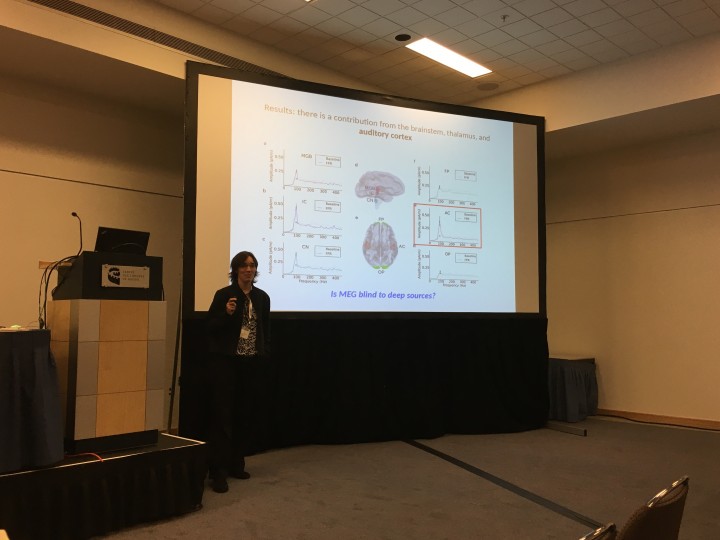
The symposium was concluded with a closing overview by the symposium discussant, Prof. Claude Alain, from the University of Toronto (Canada), and by a lively discussion with the audience, that continued over and intense and delicious dinner with the symposium speakers at Les Sales Gosses dowtown Quebec City.
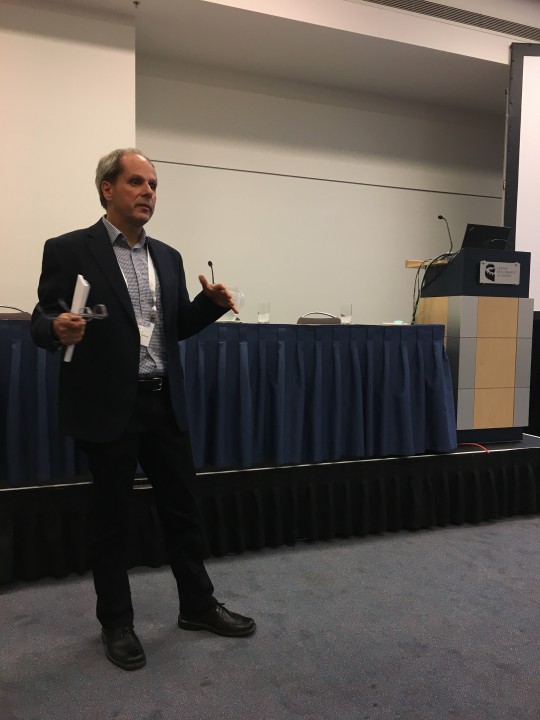
Overall, very interesting questions were posed, scientific knowledge and research advises were interchanged and even some potential collaborations between the research groups of the different speakers emerged. The symposium was a great success and we would like to thank and congratulate all the speakers and the organizers for their magnificent work!


